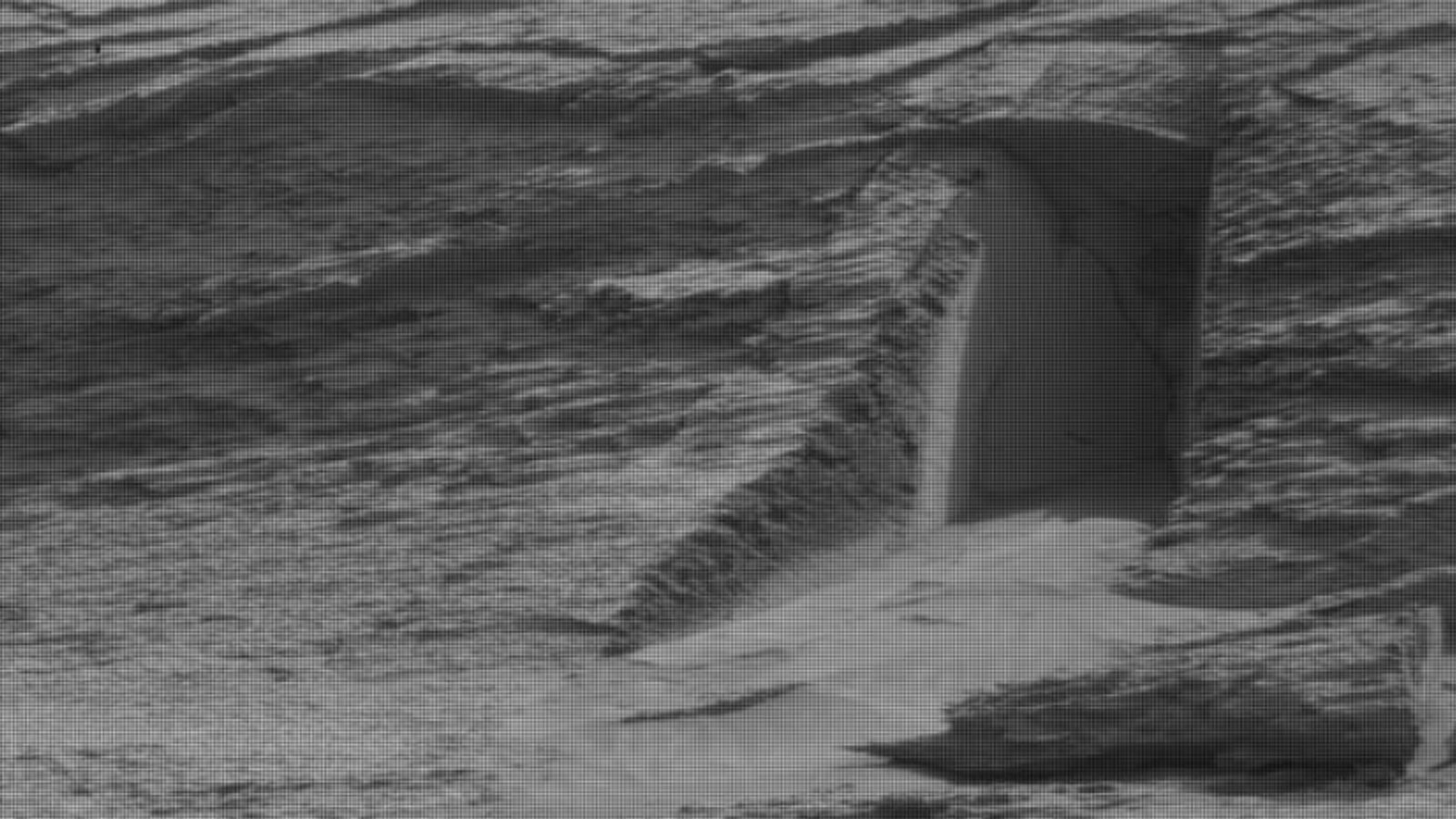At first glance a photograph of Mars released by NASA appears to show a doorway carved into the rock.
The grainy image, captured by the Curiosity rover last week, clearly shows a rectangular gap in the rockface and has, perhaps inevitably, spawned conspiracy theories that point to it as evidence of alien life on the red planet.
For as long as humans have looked up to the skies we have seen things that aren’t really there – whether pictures in constellations, a face on the moon or a “mysterious hut” spotted by Chinese scientists that turned out to be a boulder.
And the simple explanation for the “door” on Mars is actually contained within the photograph itself if you look more closely, scientists have said.
It shows evidence that the feature was formed through normal geological processes.
A deep crack or fissure is visible inside the “door”, indicating a fracture in the rock – something that happens on both Mars and Earth and could have taken place any time in the past few hundred million years.
Perspective also comes into play – NASA says the fissure only appears to be a full-sized door because the image is extremely zoomed in.
Europe’s mission to Mars could be on hold for years due to Ukraine war, Sky News told
Space-grown lettuce could help astronauts avoid bone loss on three-year mission to Mars
Ukraine war: British-built rover launch to find life on Mars delayed over ‘impossibility’ of working with Russia
The gap is actually a small crevice in a rock, a spokesperson explained to Snopes, a fact-checking website.
“The team’s scientists underlined just how small it is”, they said, about 30 centimetres by 45 centimetres.
According to the scientists, “there are linear fractures throughout this outcrop, and this is a location where several linear fractures happen to intersect”, they added.
The good news is that the Curiosity rover is continuing with its search for life on Mars, or at least signs that life once existed there.
The NASA rover landed in the Jezero crater on 18 February last year – along with the Ingenuity Mars helicopter – and has been collecting samples and sending back images.
It is due to spend at least two years exploring the area.









